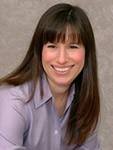You are trying to do a beautiful thing, and I am confident that you wish to do it sensitively, and profoundly. In that spirit, let me explain what I see as key components of the task you have assumed, and what might be necessary to properly answer your question.
The creation of memorial art is often a sacred trust. Fulfilling that trust requires the artist, as best he or she can, to see the memorialized both as they saw themselves and as the artist wishes others to see them. Seeing the memorialized as they saw themselves requires commitment to understanding of the truths, beauties, complexities, and ambivalences of their cultural contexts, and of their own relationships to those contexts. Reducing Judaism to catchwords for ethical values may ultimately be a necessity of the form, but that reduction must be the end product of intense study and reflection rather than a substitute for them.
As a downpayment toward that study, I will say the following: One conception of Jewish ethics that I find compelling begins with the Biblical phrase tzelem Elokim (Genesis 1:27 and 9:6). One translation of that phrase (please note that the translation is greatly disputed, and not all Jewish commentators agree even that the two words are part of the same phrase) is “mold of G-d” (not image, which is more likely a translation of the Hebrew demut from Genesis 5:1). One Jewish tradition teaches that this refers to the irreducible uniqueness and unity of each individual human being, and a possible understanding of that tradition is that this uniqueness is absolute – it is not that each human being has something about them that is unique, but rather that everything about each and every human being is unique because it cannot be separated from their whole being.
And yet (here the writings of Rabbi Joseph Soloveitchik, especially his “Lonely Man of Faith” are invaluable) human beings are capable of forming communities, which are built on commonalities. This paradox is at the core of Jewish ethics, which recognizes that ethical obligations are grounded both in commonality and in difference (here the works of Emmanuel Levinas, and/or perhaps Rabbi Dr. Jonathan Sacks’ The Dignity of Difference, are essential). This dual grounding is a Jewish solution to the problem of how ethical obligations can be universal and yet affected by relationship.
Perhaps it also offers a guide to how one can memorialize a population that was murdered because it was different, when the impetus for memorialization is almost certainly grounded in a recognition of sameness.
The Jewish sage Hillel once responded to the challenge of reducing Judaism to one principle by saying “What is hateful to you, do not do unto others; the rest is commentary; go learn!” Hillel used reduction to generate a pedagogic process rather than an artistic product. My hope is that my own words here can generate such a process, in which case I would look forward with great anticipation to the product.
Answered by: Rabbi Aryeh Klapper









